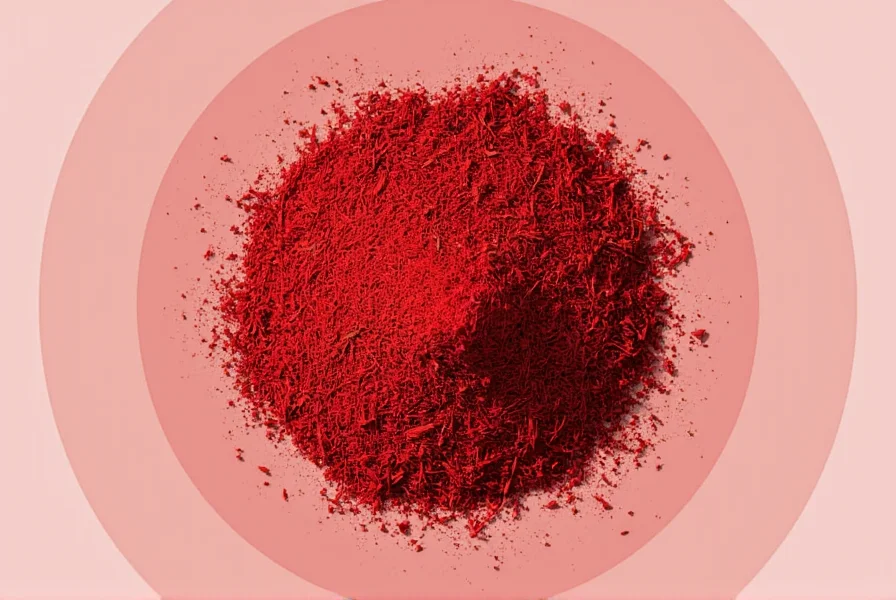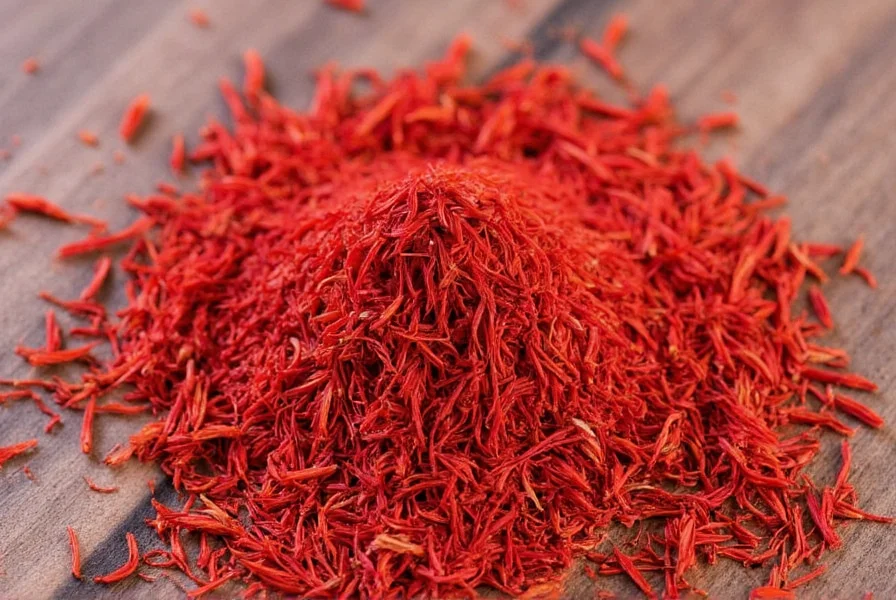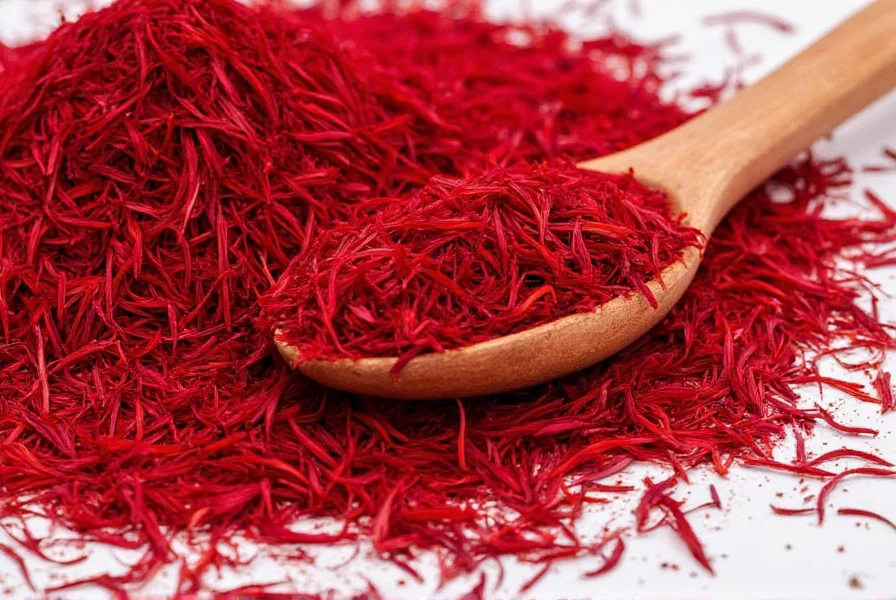Saffron's distinctive characteristics make it irreplaceable in culinary traditions worldwide. The spice delivers a unique combination of floral aroma, earthy flavor, and vibrant golden-yellow coloring that transforms ordinary dishes into extraordinary culinary experiences. Unlike artificial colorings, saffron imparts both visual appeal and complex flavor notes that cannot be replicated by substitutes.
Botanical Origins and Cultivation
The saffron crocus (Crocus sativus) is a sterile triploid plant that cannot reproduce naturally, requiring human intervention for propagation. This autumn-blooming perennial grows best in Mediterranean climates with hot, dry summers and wet springs. Major saffron-producing regions include Iran (which accounts for over 90% of global production), Spain, India (particularly Kashmir), and Greece.
Cultivation begins in June when corms (bulb-like structures) are planted. After summer dormancy, the flowers emerge in October or November, blooming for just one to two weeks. Each flower lasts only 24 hours, creating a narrow harvesting window that demands immediate attention from pickers.
The Labor-Intensive Harvesting Process
Saffron harvesting remains almost entirely manual due to the flower's delicate structure. Workers must pick the blossoms early in the morning while still closed to prevent damage. Within hours, the stigmas must be carefully separated from each flower by hand—a task requiring exceptional dexterity.
This meticulous process explains saffron's extraordinary cost. To produce a single kilogram of dried saffron, harvesters must collect and process approximately 150,000 flowers over 400 hours of labor. Compare this to vanilla (requiring 2,000-3,000 pods per kilogram) or cardamom (about 20,000 pods), and saffron's premium pricing becomes understandable.
| Spice | Flowers/Pods per Kilogram | Harvesting Hours per Kilogram | Approximate Market Price (per pound) |
|---|---|---|---|
| Saffron | 150,000 flowers | 400 hours | $1,500-$10,000 |
| Vanilla | 2,000-3,000 pods | 50 hours | $200-$600 |
| Cardamom | 20,000 pods | 30 hours | $20-$40 |
Identifying Quality Saffron
Authentic saffron consists of deep red stigmas with orange-yellow styles attached. The highest grade, 'coupe' or 'sargol,' contains only the red stigma tips, delivering maximum color and flavor. Lower grades include more of the yellow style portion, which contributes little to flavor or color.
When purchasing saffron, look for these quality indicators:
- Deep crimson-red color (not orange or brick-red)
- Distinctive honey-like aroma with hay notes
- Threads that feel dry but not brittle
- Package labeled with ISO 3632 grade (I, II, or III)
Be wary of saffron that's uniformly bright red (often dyed), comes in powdered form (easily adulterated), or has a chemical smell. Authentic saffron should release its color gradually when steeped in warm liquid—not immediately like artificial dyes.
Culinary Applications and Proper Usage
Saffron's unique properties shine in traditional dishes across multiple cultures. In Spanish paella, it provides both color and subtle earthiness. Italian risotto alla Milanese owes its golden hue to saffron. Persian jeweled rice (zereshk polo) features saffron prominently, as do Indian biryanis and Moroccan tagines.
Using saffron effectively requires proper technique:
- Bloom the threads: Crush 10-15 threads and steep in 2-3 tablespoons of warm liquid (water, broth, or milk) for 15-20 minutes
- Use the infused liquid: Add both threads and liquid to your dish during cooking
- Timing matters: Add early in cooking for deeper color penetration, later for more pronounced aroma
- Less is more: 0.1g (about 20 threads) typically suffices for 4-6 servings
Understanding what is saffron spice includes recognizing that quality saffron should never be used dry—it requires proper blooming to release its full potential. This distinguishes authentic usage from inferior preparations that simply sprinkle threads onto finished dishes.
Storage and Shelf Life Considerations
Saffron's volatile compounds degrade when exposed to light, heat, and moisture. For optimal preservation:
- Store in an airtight container away from light
- Maintain cool temperatures (below 20°C/68°F)
- Keep away from strong odors (saffron absorbs surrounding aromas)
- Whole threads retain quality longer than powdered saffron
Properly stored, high-quality saffron maintains its potency for 2-3 years. After this period, the aroma and coloring power diminish significantly. Never store saffron in the refrigerator due to moisture concerns—instead, choose a dark pantry cabinet.
Health Aspects of Saffron Spice
Historically valued for medicinal properties, modern research suggests saffron contains compounds with potential health benefits. Crocin and crocetin, the carotenoids responsible for saffron's color, show antioxidant properties in laboratory studies. Safranal contributes to the distinctive aroma and may have neuroprotective effects.
Traditional medicine systems have used saffron for mood support, with some contemporary studies examining its potential role in supporting emotional wellness. However, culinary doses (typically 0.01-0.1g per serving) contain significantly less active compounds than studied therapeutic doses (30mg daily).
When exploring what is saffron spice beyond culinary applications, note that extremely high doses (5g+) may cause adverse effects. Pregnant women should consult healthcare providers before consuming medicinal amounts, though culinary usage remains generally recognized as safe.
Differentiating Saffron from Common Substitutes
Many seek affordable alternatives to genuine saffron, but understanding what is saffron spice reveals why substitutes fall short. Turmeric provides yellow color but lacks saffron's complex flavor. Safflower offers visual similarity but none of the distinctive aroma. Paprika contributes color and mild heat but misses saffron's floral notes entirely.
While these alternatives serve specific purposes, none replicate saffron's unique combination of properties. The most authentic approach for budget-conscious cooks is using genuine saffron sparingly—just a few threads can transform a dish—rather than relying on inferior substitutes that alter the intended flavor profile.

Conclusion: The Enduring Value of Saffron
Understanding what is saffron spice reveals why this precious ingredient has maintained its status for millennia. More than just a coloring agent, saffron represents a convergence of botanical rarity, human craftsmanship, and culinary tradition. Its distinctive properties continue to justify its premium status in kitchens worldwide, where even small quantities can elevate ordinary dishes to extraordinary heights.
As you explore saffron in your cooking, remember that quality matters more than quantity. A few threads of genuine saffron, properly prepared, will deliver more culinary value than larger amounts of inferior product. This understanding of what is saffron spice and how to use it properly ensures you'll experience why chefs and home cooks have treasured this 'red gold' for centuries.

Frequently Asked Questions
Why is saffron so expensive compared to other spices?
Saffron's high cost stems from its extremely labor-intensive harvesting process. Each Crocus sativus flower produces only three stigmas, which must be hand-picked within a narrow 24-hour blooming window. It takes approximately 75,000 flowers (225,000 individual stigmas) to produce just one pound of dried saffron, requiring about 400 hours of manual labor. This intensive process, combined with the flower's brief annual blooming season, creates limited supply that drives the premium price.
How can I tell if saffron is authentic and high quality?
Authentic high-quality saffron consists of deep crimson-red threads (stigmas) with minimal yellow style attached. Look for threads that feel dry but not brittle, with a distinctive honey-like aroma with hay notes. When steeped in warm water, genuine saffron releases color gradually over 15-20 minutes, producing a rich golden-yellow hue. Avoid uniformly bright red saffron (often dyed), powdered forms (easily adulterated), or products with chemical smells. Premium saffron should be labeled with ISO 3632 grade I (highest quality).
What's the proper way to use saffron in cooking?
To maximize saffron's flavor and color, always bloom the threads before use. Crush 10-15 threads and steep them in 2-3 tablespoons of warm liquid (water, broth, or milk) for 15-20 minutes. Add both the threads and infused liquid to your dish during cooking. For rice dishes, add early for deeper color penetration; for delicate sauces, add later to preserve aroma. Remember that less is more—0.1g (about 20 threads) typically suffices for 4-6 servings. Never use saffron dry, as this prevents proper extraction of its compounds.
How should I store saffron to maintain its quality?
Store saffron in an airtight container away from light, heat, and moisture. Keep it in a cool, dark pantry cabinet (below 20°C/68°F) rather than the refrigerator, which introduces humidity. Whole threads maintain quality longer than powdered saffron. Properly stored, high-quality saffron retains its potency for 2-3 years. After this period, the aroma and coloring power diminish significantly. Never store saffron near strong-smelling foods, as it readily absorbs surrounding odors.
Can I substitute other spices for saffron in recipes?
While turmeric, safflower, and paprika are sometimes suggested as saffron substitutes, none truly replicate its unique combination of flavor, aroma, and coloring properties. Turmeric provides yellow color but lacks saffron's complex floral notes. Safflower offers visual similarity but none of the distinctive aroma. The most authentic approach is using genuine saffron sparingly—just a few threads can transform a dish—rather than relying on inferior substitutes that alter the intended flavor profile. For traditional dishes like paella or risotto, authentic saffron is essential to achieve the proper character.











 浙公网安备
33010002000092号
浙公网安备
33010002000092号 浙B2-20120091-4
浙B2-20120091-4